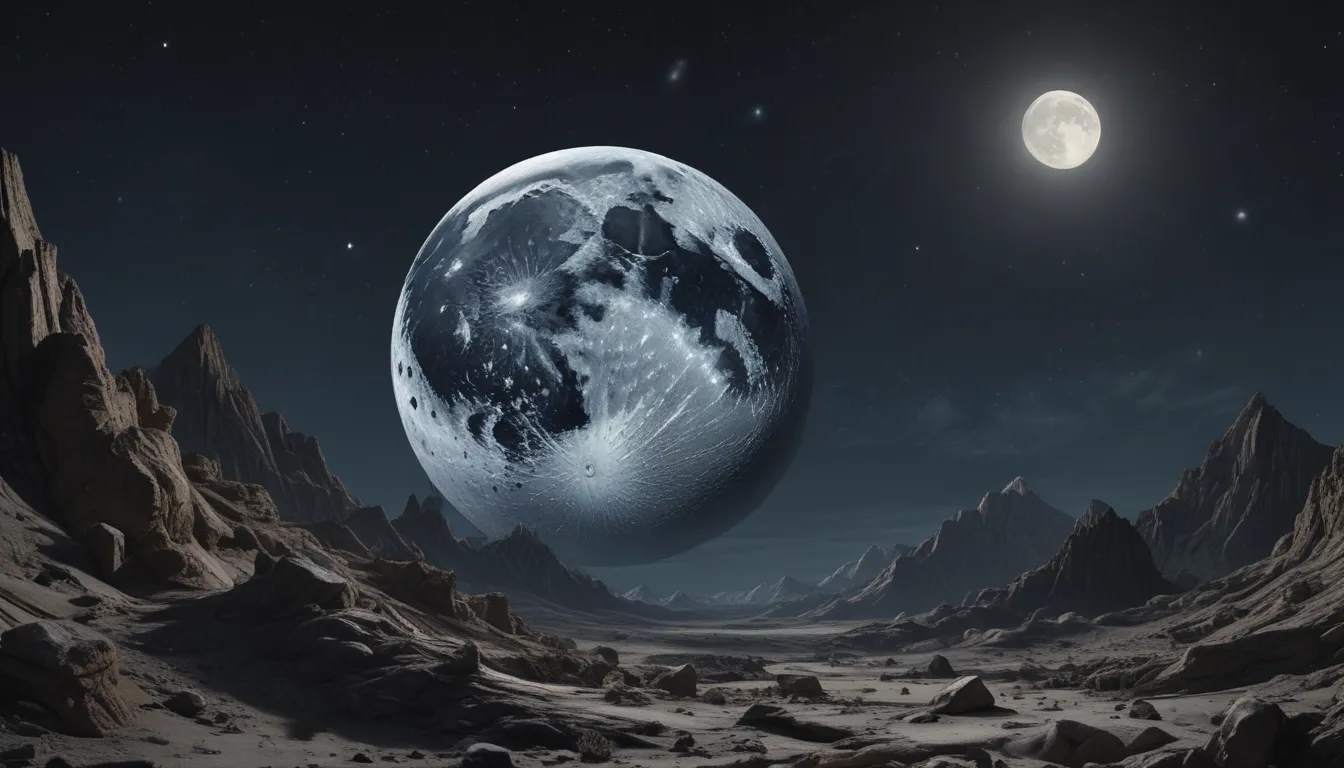The pictures we use in our articles might not show exactly what the words say. We choose these pictures to make you interested in reading more. The pictures work together with the words but don’t take their place. The words still tell you the important facts.
The moon, Earth's faithful companion, has captivated human curiosity for centuries. Its luminous presence in the night sky, shifting phases, and profound influence on Earth's tides have inspired awe, myths, and scientific inquiry. In this article, we will embark on a journey to uncover 18 captivating facts about the moon, shedding light on its mysteries and enhancing our appreciation for this celestial wonder.
Understanding Earth’s Cosmic Sidekick
The Moon stands as Earth's sole natural satellite, gracefully orbiting our planet. As the fifth largest moon in our solar system, it plays a pivotal role in shaping our world.
The Synchronous Dance of the Moon
With a synchronous rotation, the Moon rotates on its axis in the same amount of time it takes to orbit Earth. This phenomenon results in us always seeing the same side of the Moon from our perspective.
Tidal Tales: The Moon’s Influence
The Moon's gravitational pull has a profound impact on Earth's tides, causing the ebb and flow of ocean waters as it exerts its force on our planet.
Unveiling the Dark “Seas”
Contrary to their name, the dark patches on the Moon's surface are vast plains of solidified lava known as "seas." These regions are discernible from Earth and add character to the Moon's surface.
A Timeless Beauty: The Moon’s Age
Scientists estimate the Moon's age to be approximately 4.5 billion years, offering valuable insights into the early stages of our solar system and the universe's formation.
Eerie Silence: The Moon’s Atmosphere
Unlike Earth, the Moon lacks a substantial atmosphere, resulting in no weather patterns, winds, or atmospheric pressure on its barren surface.
A Tale of Extremes: Lunar Temperatures
The Moon experiences extreme temperature fluctuations due to its thin atmosphere. Daytime temperatures can soar to 260 degrees Fahrenheit (127 degrees Celsius), while nights can plunge to a bone-chilling -280 degrees Fahrenheit (-173 degrees Celsius).
The Pioneers of Lunar Exploration
Between 1969 and 1972, twelve astronauts had the privilege of walking on the Moon's surface as part of the Apollo missions, conducting experiments and collecting samples.
The Gravitational Balance: Moon vs. Earth
With a gravitational pull roughly one-sixth that of Earth's, the Moon allows for remarkable feats such as higher jumps and easier object lifting.
Traces of Cosmic Collisions: Impact Craters
The Moon's surface is adorned with impact craters created by asteroids and meteoroids over millions of years, offering a glimpse into the solar system's tumultuous history.
Phases of Illumination
The Moon transitions through various phases observable from Earth, ranging from the invisible new moon to the luminous full moon, a dance of celestial bodies.
Illuminating Glow: The Moon’s Reflectivity
Covered in regolith, a layer of fine dust and rocks, the Moon shines brightly in the night sky as sunlight reflects off its surface.
A Quarter of Earth’s Size: Lunar Diameter
With a diameter of approximately 3,474 kilometers (2,159 miles), the Moon is a quarter of Earth's size, yet its impact is monumental.
Mysterious Magnetic Absence
In stark contrast to Earth, the Moon lacks a magnetic field, rendering compasses useless and leaving its surface vulnerable to solar radiation.
Creatures of the Night: Lunar Influence on Animals
Certain animals, from birds to marine species, exhibit behavioral changes in response to the Moon's phases, influencing migration patterns and reproductive cycles.
A Celestial Retreat: Stargazing from the Moon
The Moon's pristine environment devoid of light pollution offers an unparalleled stargazing experience, providing a gateway to the wonders of the universe.
Robotic Explorers: Unveiling Lunar Secrets
In addition to human missions, robotic explorers like the Luna and Chang'e programs have ventured to the Moon, unraveling its mysteries and expanding our scientific knowledge.
Mythical Tales: Ancient Legends of the Moon
Throughout history, the Moon's phases have inspired an array of myths and cultural beliefs, weaving a tapestry of wonder and intrigue that continues to enchant humanity.
Embracing the Moon’s Splendor
As we gaze upon the Moon, let us pause to appreciate its essence in our lives and the uncharted realms of knowledge it holds within its rocky embrace.
FAQs: Unveiling Lunar Enigmas
-
Q: How far is the Moon from Earth?
A: On average, the Moon is about 238,900 miles (384,400 kilometers) away from Earth. -
Q: Does the Moon emit its own light?
A: No, the Moon reflects sunlight, creating its radiant appearance in the night sky. -
Q: How long does it take for the Moon to orbit around the Earth?
A: The Moon completes one orbit around Earth in approximately 27.3 days. -
Q: Can humans survive on the Moon?
A: The Moon's inhospitable environment, lacking a breathable atmosphere and extreme temperatures, poses challenges to human habitation without significant technological support. -
Q: Are there living organisms on the Moon?
A: To date, no living organisms have been discovered on the Moon. -
Q: How many individuals have walked on the Moon?
A: A total of 12 astronauts ventured onto the Moon's surface during NASA's Apollo missions between 1969 and 1972.
Embracing Knowledge and Wonder
In conclusion, the Moon stands as a beacon of fascination, guiding us through realms of science and folklore. Its enigmatic surface and celestial influence spark a sense of wonder and awe, reminding us of the vast mysteries awaiting discovery in the vast expanse of the cosmos.
As we continue to explore the Moon's secrets and unveil its hidden truths, let us embrace the endless possibilities and enriching experiences that come with delving into the realm of lunar exploration. Let the Moon's ethereal glow inspire you to reach for the stars and embrace the mysteries of the universe with open minds and curious hearts.






